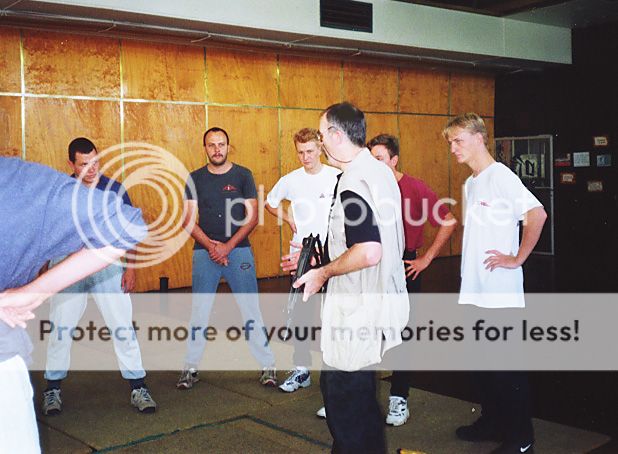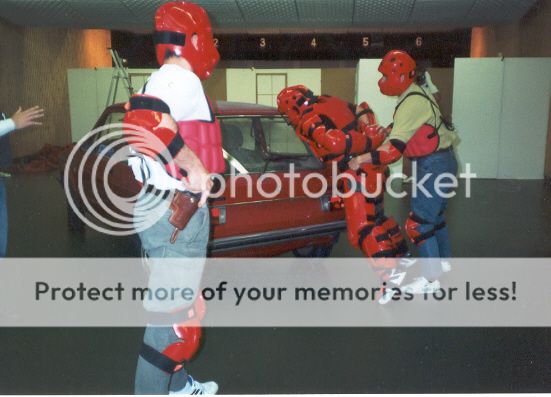
While on a military range in Germany, going through training on the HK MP5K and related weapons with a CP unit; I noticed a group of women soldiers on the adjacent range, being marched in to go through basic rifle training. The instructor, a male NCO, commenced to ridicule and verbally abuse them as they proceeded to try to achieve groups. Catching my eye, he grinned, expecting me to share in his delight. I just shook my head, and made a mental note "you can't scream and shout people into being a good shot.
Elsewhere I have written that a main problem with the firearms training for many official agencies is that they are never in the same state of intense stress during training, as they would be during a gunfight. How do I reconcile these opposing statements?
The key is that firearms training should follow a progression, with distinct phases.
LEARNINGThis is where fundamental skills are learned, or, new skills acquired. It must be conducted in a calm atmosphere
 [Slacky working on pistol skills under the guidance of Marcus]
[Slacky working on pistol skills under the guidance of Marcus]People learn at different rates, and this must be allowed for.
During this phase various concepts must be explained by the staff, and fully understood by the trainees.
 [Lofty Wiseman is a master-instructor, who understands the learning process]
[Lofty Wiseman is a master-instructor, who understands the learning process]In trying to verbally describe complex and fine motor skills [such as the trigger operation] the use of metaphor is essential.
Once a degree of skill is acquired we go into the next phase....
TRAININGA number of drills are used to fully install the skills. Task-related training is required, to make the practice relevant to your particular needs.

In sniper training there is the concept of the "cold shot"; the first shot fired on the day should be done as a realistic problem, rather than a warm up. Using a concept from the Delta Force, I used to train with just a shooting partner, every week, and we would set up a surprise problem for each other as a "cold drill" shot before we did anything else. This might be a close range or long, several targets or just one. We used to load each others weapons, and often induce stoppages. The main thing was that the drill was a surprise test of how you performed "cold"
For the "cold" drills I had a collection of props bought in markets and Pound-shops, to use on the targets. Plastic pistols, subjuns, cellphones, radios, police badges etc all added to the ID problem.

After that we would go onto practice drills, positional shooting, stoppage drills, support-hand shooting etc.

During this phase increasing levels of stress can be introduced, as the shooter is already proficient in fundamentals.

 [Wounded Operator Drills are an essential part of any program]TESTING
[Wounded Operator Drills are an essential part of any program]TESTINGThis is the validation of the previous learning and training phases. Methods include stress scenarios, which include decision making and target discrimination.

Using an idea from Mass Ayoob, we utilized an electronic stun gun to induce stress......
 [Here a trainee in RSA has a stoppage while shooting with 50,000 volts are being applied.]
[Here a trainee in RSA has a stoppage while shooting with 50,000 volts are being applied.]The best type of scenario training uses human role players and training weapons firing marking cartridges [such as
Simumitions FX]. Here a trainee is about to enter the "House of Wax during BG training....

With the inclusion of padded gear we can incorporate other force options along with the firearms....

This is essential in overall training, in that the trainee should know where the appropriate force fits into other relevant activities.

Finally, the testing should be a learning experience, and a full debrief allows lessons to be identified and incorporated into future training schemes.
